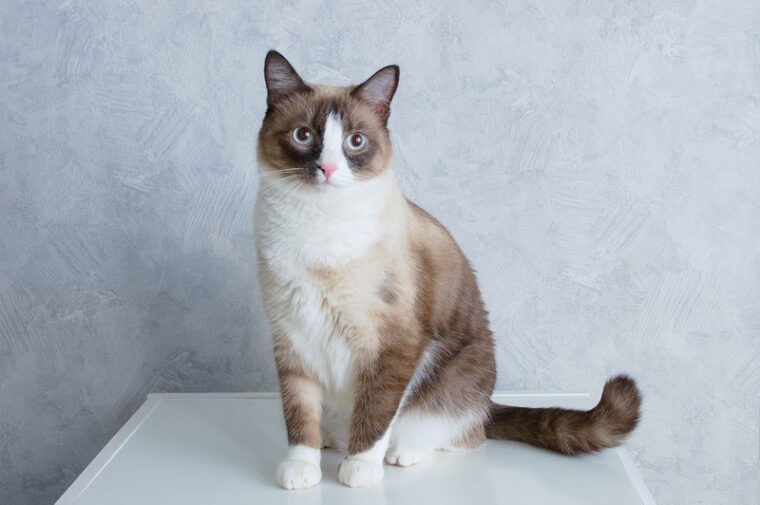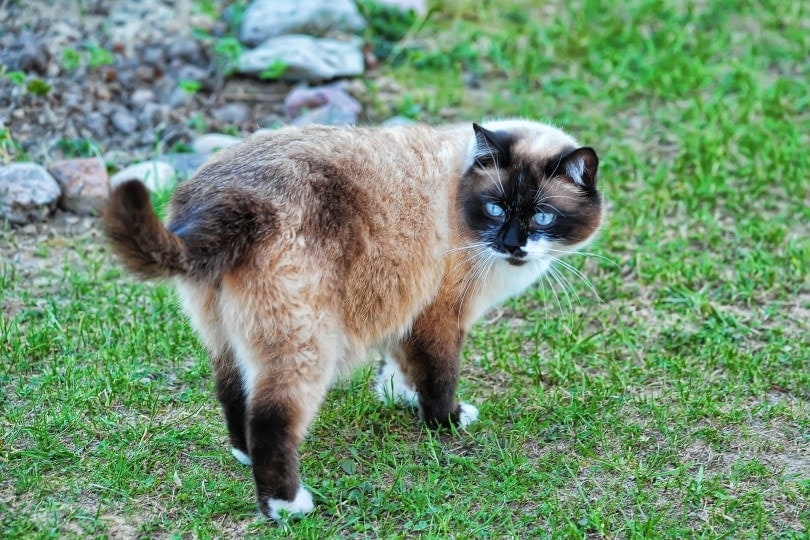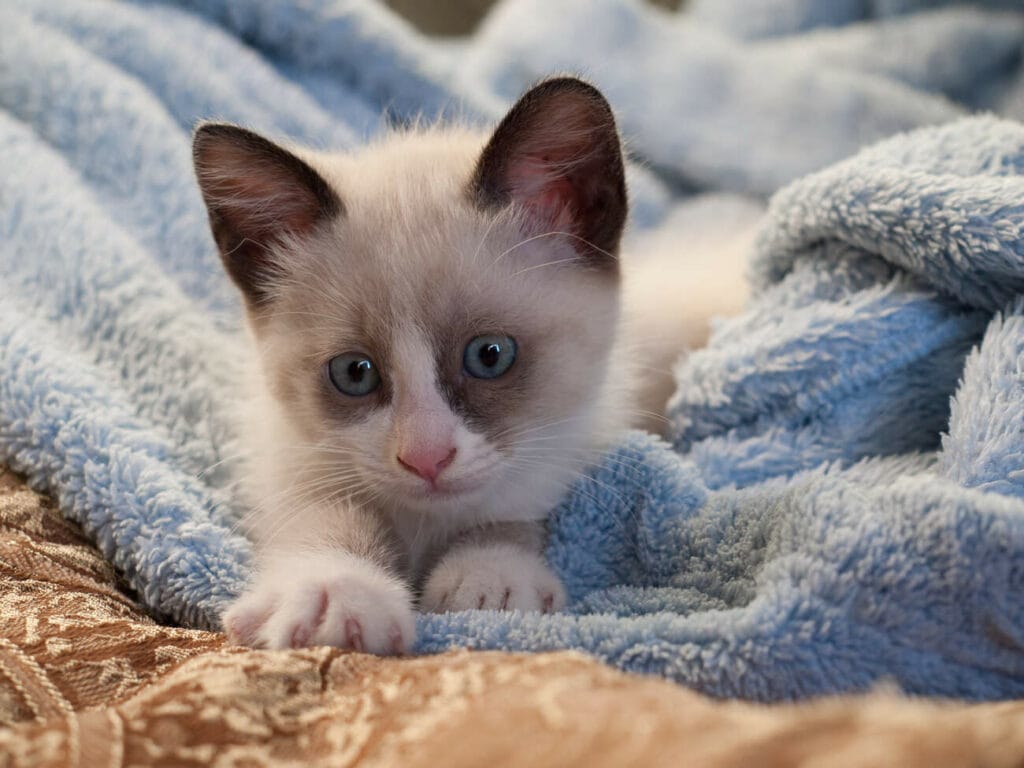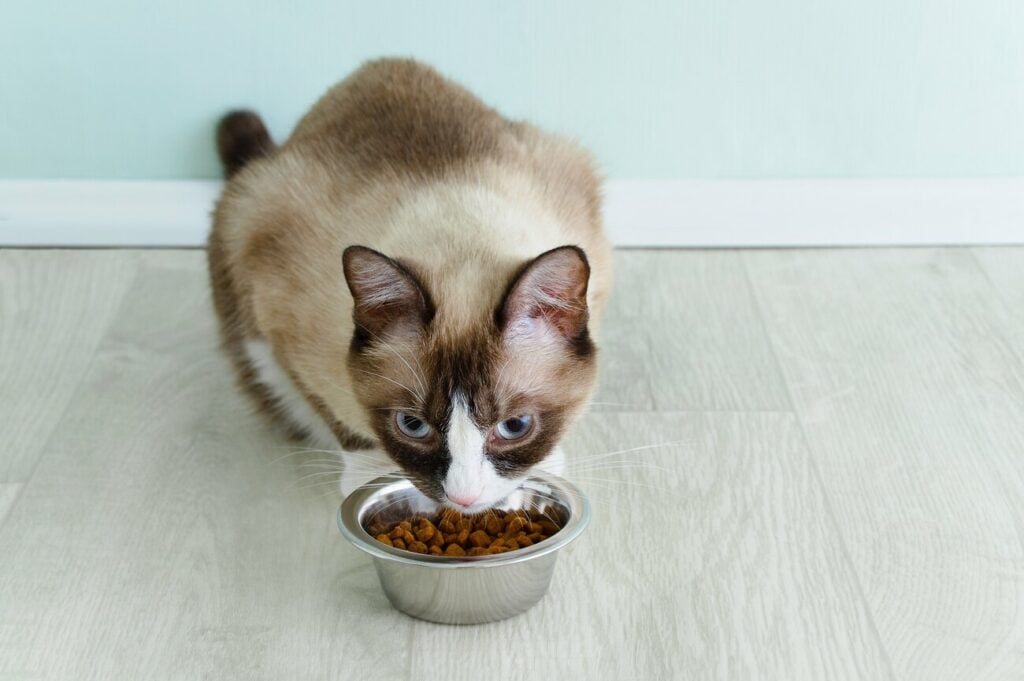
Click to Skip Ahead
The Snowshoe is definitely unique! With most cat breeds, you can expect a certain personality, but the Snowshoe can vary in temperament quite drastically.
If you’ve been considering adding one of these beautiful cats to your family or if you already have, you should also know that part of keeping them in good health is keeping track of their weight.
Preventing your cat from eating too much or too little is essential for them to maintain a healthy weight. So, let’s go through the average weights that you can expect your Snowshoe to be from kitten to adulthood. This should help guide you in maintaining their health over the course of their lifetime.
Snowshoe Cat Overview
The Snowshoe is not an old breed, with their developmental beginnings being in the early 1960s. In fact, they were technically an accident.
A Siamese cat breeder by the name of Dorothy Hinds Daugherty noticed that three kittens in one of her Siamese cat’s litters all had white feet. She purposefully bred these cats to have kittens with white feet and pointed colors. Eventually, we ended up with the Snowshoe cat.
These medium-sized cats are born with completely white fur that gradually darkens into point coloring, which is most commonly blue or seal point.
What sets them apart from similar breeds are those white socks, and most Snowshoes also tend to have an upside-down white “V” between their blue eyes.
The Snowshoe can be sweet or bossy and can be vocal or quiet. But all are friendly, playful, intelligent, and loyal.

Snowshoe Cat Size and Weight Chart
Snowshoe cats are typically medium in size with a long frame. The males are larger than the females. An average healthy male can weigh 10 to 14 pounds and measure 8 to 13 inches, and females can weigh about 8 to 12 pounds and measure 7 to 11 inches.
It can take the Snowshoe up to 3 years to reach their full adult size. The following chart contains the weights of male and female Snowshoe cats, starting at 3 months and ending at 3 years.
Bear in mind that these weight ranges are averages and don’t necessarily reflect all Snowshoe cats.
| Age | Male Weight Range | Female Weight Range |
| 3 Months | 4-5 lbs./1.8–2.26 kg | 3–4 lbs./1.36–1.8 kgs |
| 6 Months | 5–6 lbs./2.26–2.7 kgs | 4–5 lbs./1.8–2.26 kgs |
| 9 months | 6–7 lbs./2.7–3.17 kgs | 5–6 lbs./2.2–2.7 kgs |
| 1 Year | 8–9 lbs./3.6–4.08 kgs | 6–8 lbs./2.7–3.6 kgs |
| 3 Years | 10–14 lbs./4.5–6.35 kgs | 8–12 lbs./3.6–5.44 kgs |
When Does a Snowshoe Cat Stop Growing?
Most other cat breeds tend to reach their full adult size when they are 12 to 18 months of age. But the Snowshoe can take 2 to 3 years to reach their full maturity.
The fastest growth in all cat breeds occurs within the first year of life, though, so you’ll want to monitor their weight at this time to ensure that they maintain a healthy weight.

Factors Affecting the Size of a Snowshoe Cat
Female Snowshoe cats are notably smaller than males, which average 10 to 14 pounds. Females average 8 to 12 pounds.
Nutrition is another factor that will impact a cat’s size, and early nutrition for kittens is paramount. The rapid growth in the first year requires a healthy diet; poor nutrition can cause stunted growth.
Furthermore, kittens will take after their parents when it comes to size, and if there’s an inherited health condition or other issue, this can also affect the cat’s size.
Ideal Diet for Maintaining a Healthy Weight
It should be noted that the Snowshoe is prone to obesity, so you must go easy on treats and ensure that they are eating high-quality and nutritionally balanced cat food.
The food that you choose should be formulated for your cat’s current age and size and whether they are an indoor or outdoor cat. Your vet is an excellent person to discuss and recommend the right food for your cat.

How to Measure Your Snowshoe Cat
Measuring and weighing your Snowshoe might prove tricky because cats are not that cooperative in these situations. But here are a few tips.
To measure your cat’s length, begin at the tip of the nose, and measure to the base of the tail. The tail itself isn’t included in this measurement. To measure your cat’s height, start at the top of the shoulder, and measure down to the feet.
You can also have your cat weighed at the veterinarian’s clinic. You can try using a scale at home, but your cat won’t likely cooperate, unless you can have your cat sit still long enough to get an accurate reading. Another option is to weigh yourself and then weigh yourself again while holding your cat, and just subtract the difference. This is not a completely accurate reading, but it should still give you an idea of your cat’s weight.
Conclusion
Snowshoe cats are medium-sized cats that can weigh up to 14 pounds and don’t reach their full adult size until they are 2 to 3 years of age. From the time that they are kittens until they reach their full adult size, they will grow and gain weight steadily, but keep an eye out for signs that your cat might be under or overweight.
Feeling your cat’s ribs is a good test for a healthy weight. You should be able to feel their ribs, but they should have a covering of a slight layer of fat. If your cat’s ribs are quite pronounced, your cat needs to gain weight, or if you can’t feel the ribs at all, they are overweight. Speak to your vet to help you sort out your cat’s weight if necessary.
Featured Image Credit: Yuliya Alekseeva, Shutterstock







